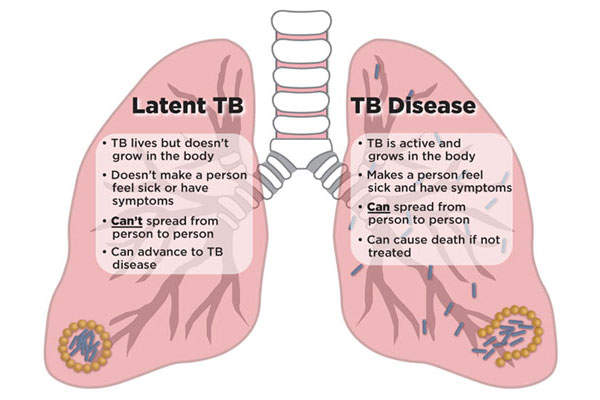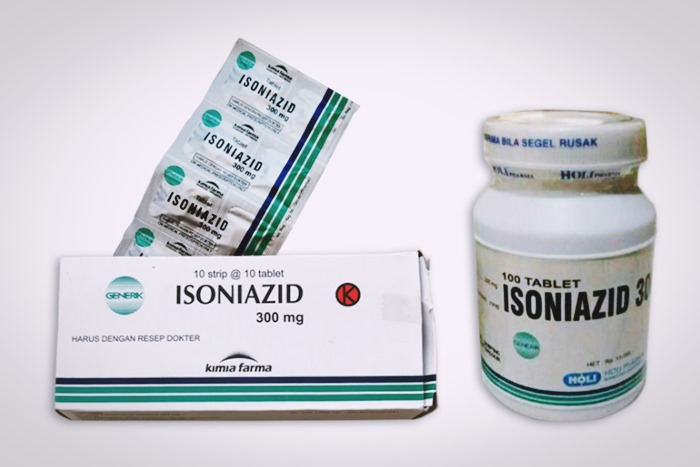Breakthrough In Developing Treatment Protocol For Latent Tuberculosis Using Isoniazid And Rifapentine
Source: Thailand Medical News Dec 18, 2019 5 years, 4 months, 1 day, 8 hours, 59 minutes ago
A key goal of
tuberculosis (
TB) research is to find a way to treat people with the
latent (or inactive) form of the disease to keep them from developing symptomatic
TB. A breakthrough study using a new animal model developed for this purpose showed a combination of two classes of antibiotics can wipe out this hidden threat. The study was published in the
American Journal for Respiratory Clinical Care Medicine.

Dr Deepak Kaushal, Ph.D., Director of the Southwest National Primate Research Center, and Dr Jyothi Rengarajan, Ph.D., Associate Professor of Medicine at Emory University and the Yerkes National Primate Research Center, served as co-principal investigators of the 10-month study. Using rhesus macaques, the scientists were able to create a model of
latent TB that resembles what occurs when a person is infected with
Mycobacterium tuberculosis (
Mtb), the bacteria that causes
TB, but does not develop active disease. The bacteria are "hibernating" in the lungs, Dr. Kaushal explained.
Dr Kaushal told
Thailand Medical News, "People with latent tuberculosis infection remain a source of disease because they can potentially reactivate at any point in time.”
Complicating factors like an HIV infection, diabetes, aging or other diseases can trigger the latent bacteria to become symptomatic and infectious again. The current treatments for latent
TB are lengthy. Many patients do not finish the course of therapy. Dr. Kaushal believes a shorter course of treatment would be beneficial.

Utilizing low-dose infection through an aerosolization chamber, scientists gave the nonhuman primates enough
TB to create a
latent infection. The scientists then treated half of the animals with a once-weekly combination of antibiotics
isoniazid and
rifapentine for three months; the other half was untreated. This is likely the first report modeling
LTBI treatment in nonhuman primates.
Subsequently, the animals were infected with SIV (Simian immunodeficiency virus), which mimics HIV in humans, to test whether the drug treatment cleared bacteria from their lungs. Of the monkeys that had no treatment for latent
TB, 70 percent developed active
TB after SIV infection. None of the monkeys that had the three-month course of antibiotics developed active
TB after SIV infection suggesting the treatment cleared the bacteria and prevented reactivation.

Dr.
Rengarajan commented, "The antibiotic treatment we used for this study is a new, shorter regimen the CDC recommends for treating humans with
latent tuberculosis, but we did not have direct evidence for whether it completely clears latent infection. Our experimental study in macaques showing almost complete sterilization of bacteria after treatment suggests this three-month regimen sterilizes humans as well."
Also, the study marked the first time that rhesus macaques were used as a model of latent
TB treatment. Dr. Kaushal said the animal will be an important model for testing other
TB treatment regimens going forward.
Globally,
TB claims more lives than any other infectious disease. In the U.S. alone, about 13 million people develop
latent TB each year, and 15,000 to 20,000 people are diagnosed with active
TB annually. Worldwide, close to one quarter of the population (1.8 billion) is infected with
TB, according to the World Health Organization.
Dr. Andrew Vernon of the Division of
TB Elimination at the Centers for Disease Control & Prevention and Dr. William Bishai of the Center for
Tuberculosis Research at Johns Hopkins University, in an accompanying editorial published in the same journal, write the application of this drug regimen "could presage a major step forward in
TB prevention and control." They call the results of the study "dramatic."
The team hopes that by mid 2020 or early 2021, they would be able to proceed with human clinical trials so that the treatment protocol can be advocated for use in the affected populations.
The research study was conducted at Tulane and Emory as part of a
Tuberculosis Research Unit (TBRU) U19 award to Emory University (Program Directors: Henry Blumberg MD, Emory and Joel Ernst, MD, UCSF), and includes additional collaborators at Emory, UCSF and University of Florida from the TBRU-ASTRa study group.
Reference : Taylor W. Foreman et al, Isoniazid and Rifapentine Treatment Eradicates Persistent Mycobacterium tuberculosis in Macaques, American Journal of Respiratory and Critical Care Medicine (2019). DOI: 10.1164/rccm.201903-0646OC


